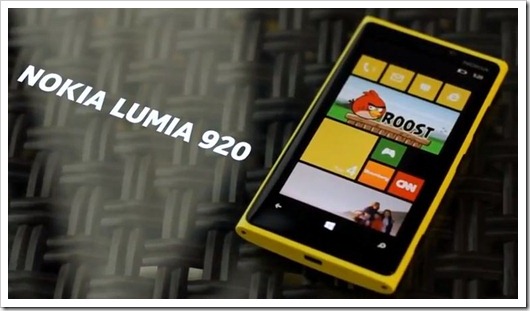Hopes soared for Nokia when lawyers battling on behalf of Apple against Samsung in a US court used Lumia phones as examples to explain how manufacturers can innovate and be different from the iPhone.
In its latest foray into the smartphone market, on the 5th of September 2012, the long-dethroned mobile phone market leader announced the launch of its new Windows Phone 8, the Lumia 920. This new phone has been hailed by many for the features which includes innovations like wireless charging.
However, the top feature that made heads turn was the PureView camera, which was pretty impressive at 8.7 megapixels. Nokia claims that the camera also comes with an ability to capture up to ten times more light than other existing phone cameras and includes image stabilization technology that is implemented using what the company calls the “floating lens” technology.
The optical image stabilization (OIS) promises to cut down the shaking that is found in video shots taken by phone cameras.
Is it time now to watch Nokia rise to cruise altitude again?
Despite a promising show with its previous Lumia phones, the company has been hit by turbulence time and again. The latest blow comes in the form of an advertising blunder that may put Nokia’s marketing principles under the scanner for a while.
Popular technology site The Verge caught them faking an ad in which a large, dedicated camera was used instead of the Lumia 920 to demonstrate the power of OIS. While the ad does not say anywhere that this was shot with Nokia Lumia, it creates an impression of being so. Generally, in such cases, a disclaimer is immediately shown so that consumers do not misconstrue, which Nokia failed to do.
Nokia swiftly went into damage control mode by first claiming they aimed to “simulate” the working of the camera phone with that advertisement, and then announcing that an apology is due for the confusion caused.
Even though Nokia is carefully playing down the bogus advertisement, my mind refuses to stop thinking.
How did Nokia choose to miss out on the culture of trust in their advertising?
A lot has been discussed about possible moves that Nokia could make to revive its past glory, particularly in rising markets like India. Not all has been well, with a $1 billion operating loss posted for Q2, 2012.
The last thing that Nokia would want at this critical juncture is any erosion of trust resulting from questionable advertising.
It’s over to you now, readers!
Do you think the fake ad goof-up by Nokia was insignificant? Or, is it yet another straw on the camel’s back? Your views are welcome!

No comments:
Post a Comment